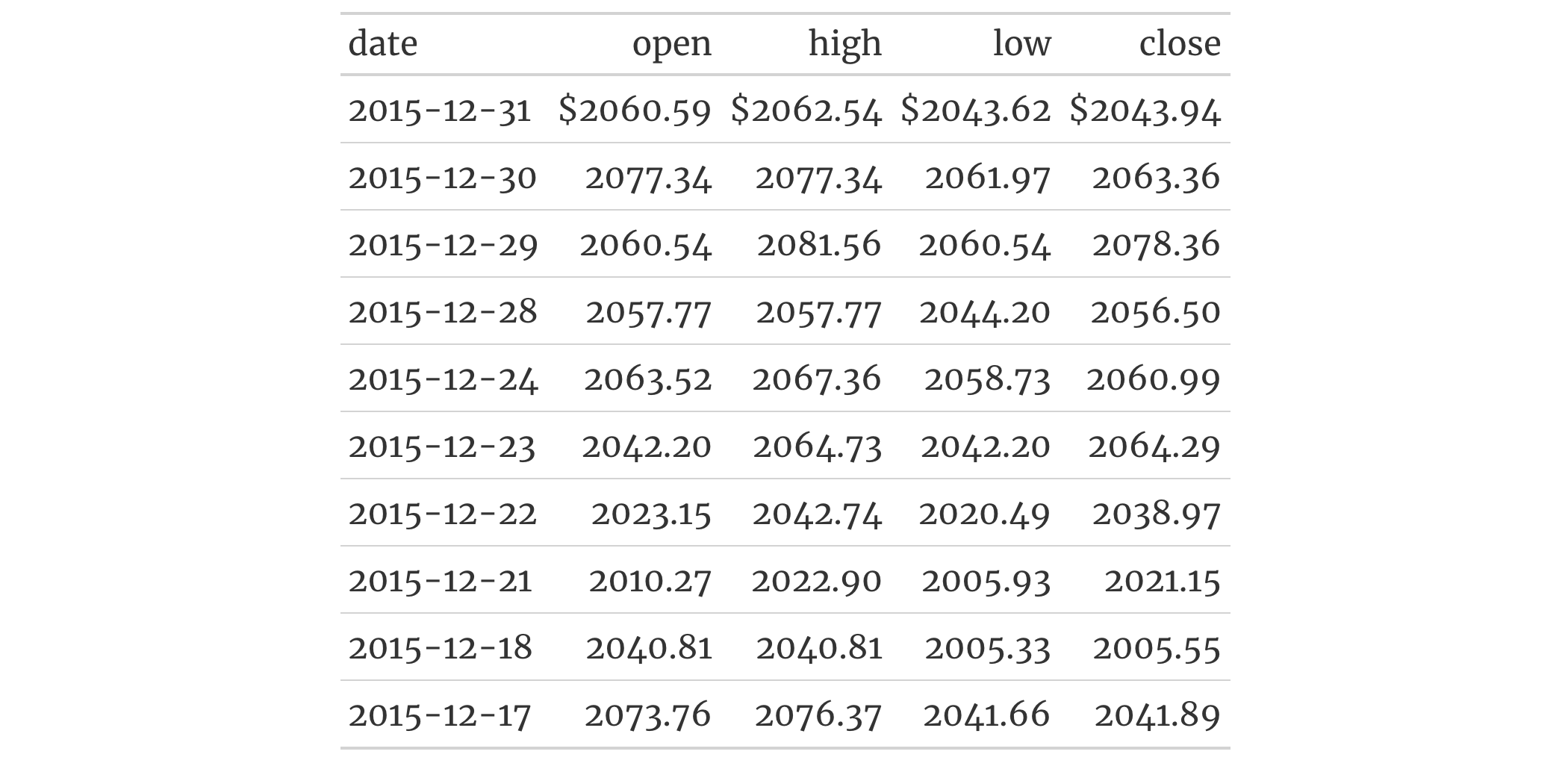google_font: Helper function for specifying a font from the Google Fonts service
Description
The google_font() helper function can be used wherever a font name should
be specified. There are two instances where this helper can be used: the
name argument in opt_table_font() (for setting a table font) and in that
of cell_text() (used with tab_style()). To get a helpful listing of fonts
that work well in tables, use the info_google_fonts() function.
Usage
google_font(name)Value
An object of class font_css.
Arguments
- name
The complete name of a font available in Google Fonts.
Examples
Use exibble to create a gt table of eight rows, replace missing values
with em dashes. For text in the time column, we use the Google font
"IBM Plex Mono" and set up the default_fonts() as fallbacks (just in case
the webfont is not accessible).
exibble %>%
dplyr::select(char, time) %>%
gt() %>%
sub_missing() %>%
tab_style(
style = cell_text(
font = c(
google_font(name = "IBM Plex Mono"),
default_fonts()
)
),
locations = cells_body(columns = time)
)

Use sp500 to create a small gt table, using fmt_currency() to
provide a dollar sign for the first row of monetary values. Then, set a
larger font size for the table and use the "Merriweather" font using the
google_font() function (with two font fallbacks: "Cochin" and the
catchall "Serif" group).
sp500 %>%
dplyr::slice(1:10) %>%
dplyr::select(-volume, -adj_close) %>%
gt() %>%
fmt_currency(
columns = 2:5,
rows = 1,
currency = "USD",
use_seps = FALSE
) %>%
tab_options(table.font.size = px(20)) %>%
opt_table_font(
font = list(
google_font(name = "Merriweather"),
"Cochin", "Serif"
)
)

Function ID
7-27
See Also
Other helper functions:
adjust_luminance(),
cell_borders(),
cell_fill(),
cell_text(),
cells_body(),
cells_column_labels(),
cells_column_spanners(),
cells_footnotes(),
cells_grand_summary(),
cells_row_groups(),
cells_source_notes(),
cells_stub_grand_summary(),
cells_stub_summary(),
cells_stubhead(),
cells_stub(),
cells_summary(),
cells_title(),
currency(),
default_fonts(),
escape_latex(),
gt_latex_dependencies(),
html(),
md(),
pct(),
px(),
random_id(),
stub()